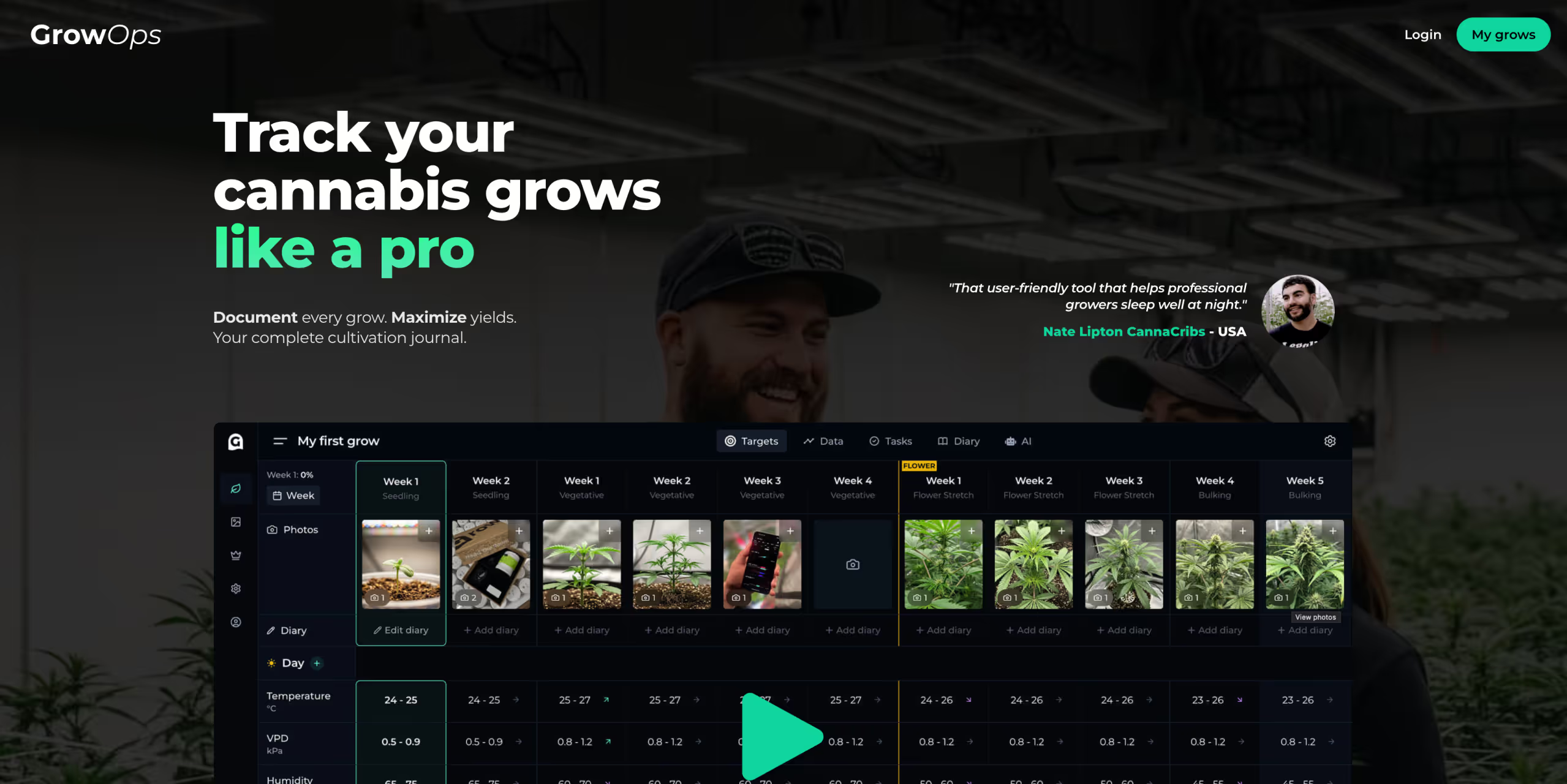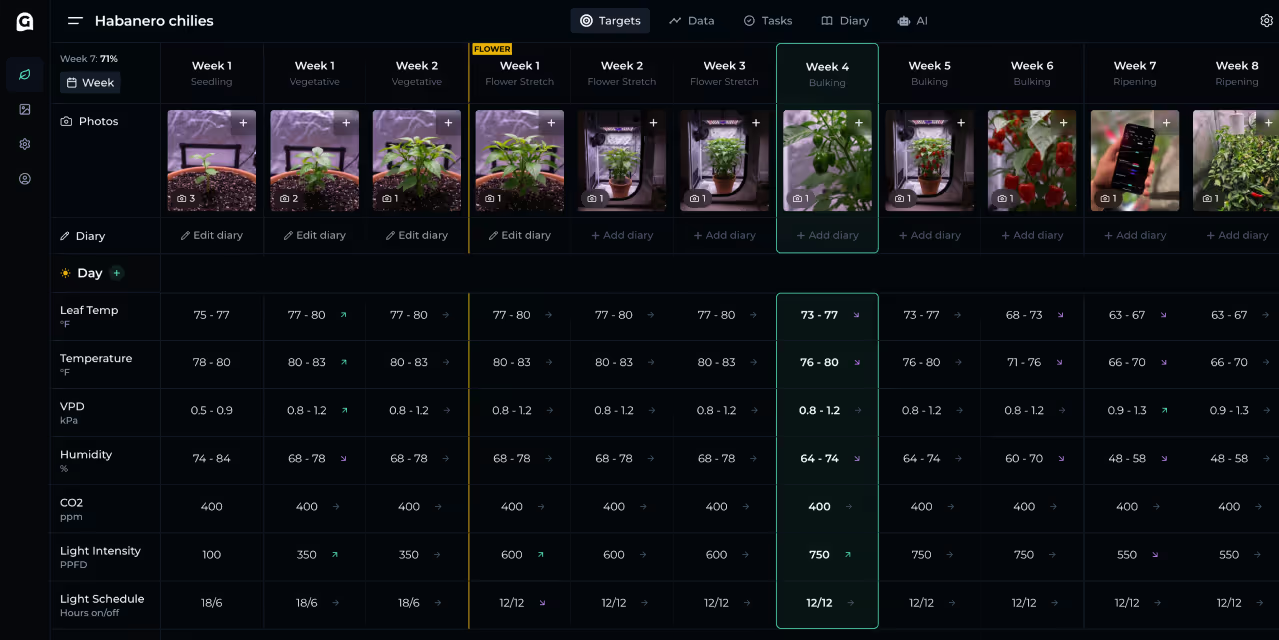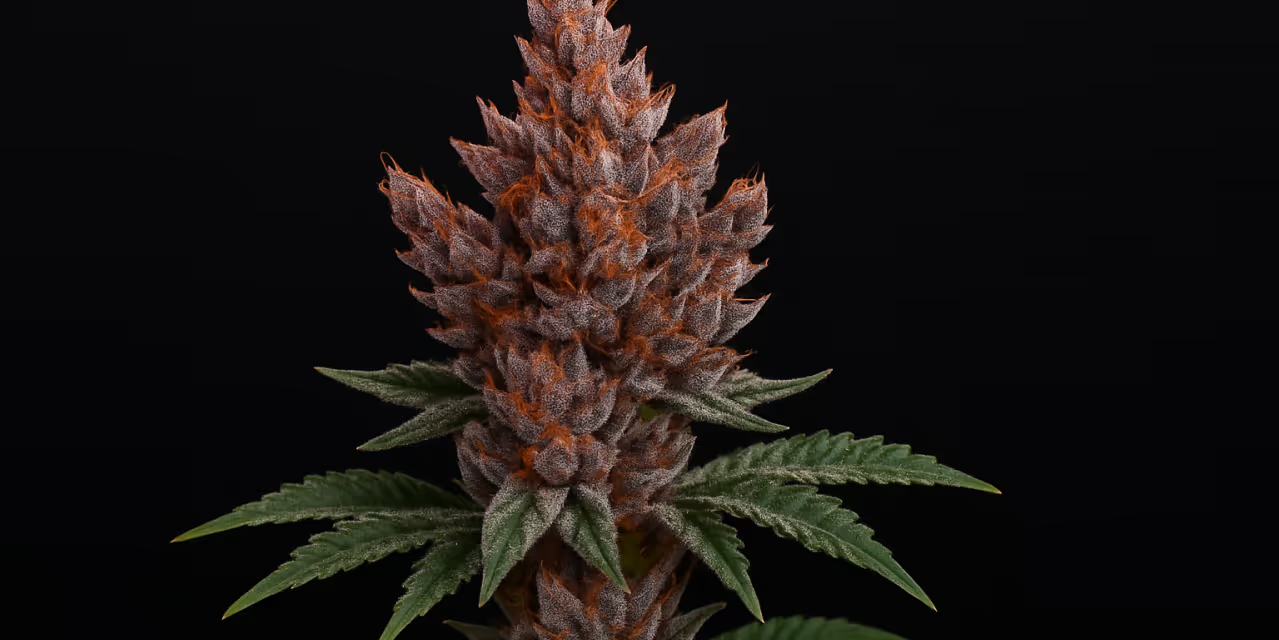DLI calculator: Uncover how much light your plants need now
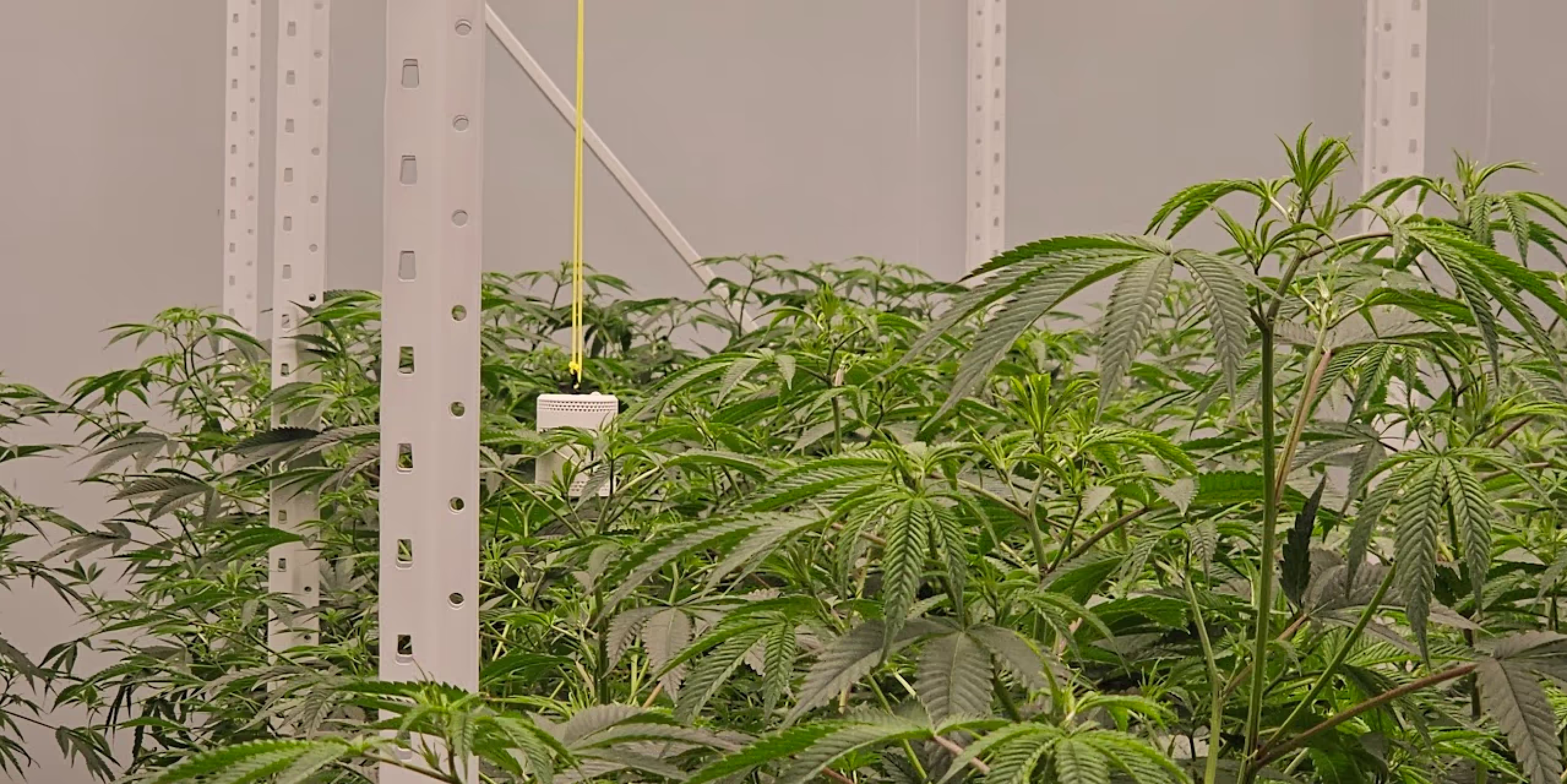
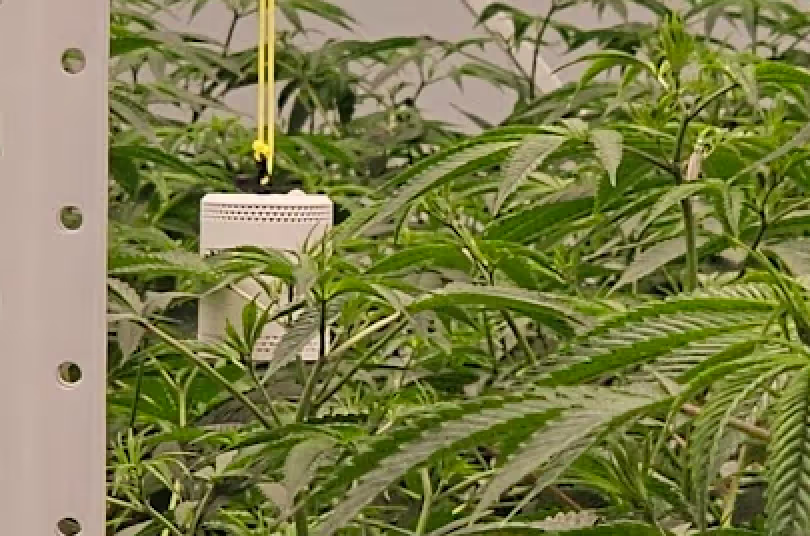
Is your grow hitting its full potential?
It’s not just about turning on the lights.
While growers meticulously manage nutrients and environment, the often-overlooked Daily Light Integral (DLI) dictates the true success of your harvest.
If you fail to optimise DLI, you'll face slow plant growth and reduced yields, no matter how perfect everything else is.
Dive in to understand DLI and why it matters, and discover the tools and knowledge to precisely calculate and deliver the optimal light for your plants.
Disclaimer: Any information given on this site is for educational purposes only. Please ensure if you’re growing cannabis, you’re doing so by the law and subject to appropriate permissions and licenses of the applicable country.
What is Daily Light Integral (DLI)?
Think of DLI as your plants' total "food intake" for light.
It's the total amount of light (specifically photosynthetically active radiation, or PAR) that your plants receive over a 24 hour period.
While a PAR meter might tell you the light intensity (PPFD) at a specific moment, DLI provides the complete picture of how much light your individual plants have accumulated throughout the course of a day.
Why does DLI matter?
Just like you wouldn't track only how much water you pour into a plant's pot right now, but rather its total water intake over a day, DLI offers a holistic view of light exposure.
It's far more informative than just knowing your instantaneous PPFD (Photosynthetic Photon Flux Density).
This metric is vital whether you're growing indoors with grow lights, in a greenhouse, or outdoors exposed to sunlight.
It helps you determine if your plants are getting enough light, are reaching their full potential, or if you need to use supplemental lighting.
Your DLI calculator tool
Need a quick way to estimate your DLI right now?
Use our simple DLI calculator for cannabis or any other plants below!
Just input your average PPFD and your total photoperiod hours, and we'll help you calculate an estimate of your Daily Light Integral.
Or, skip the math altogether and get live, 24/7 DLI data directly from your grow with the Grow Sensor.
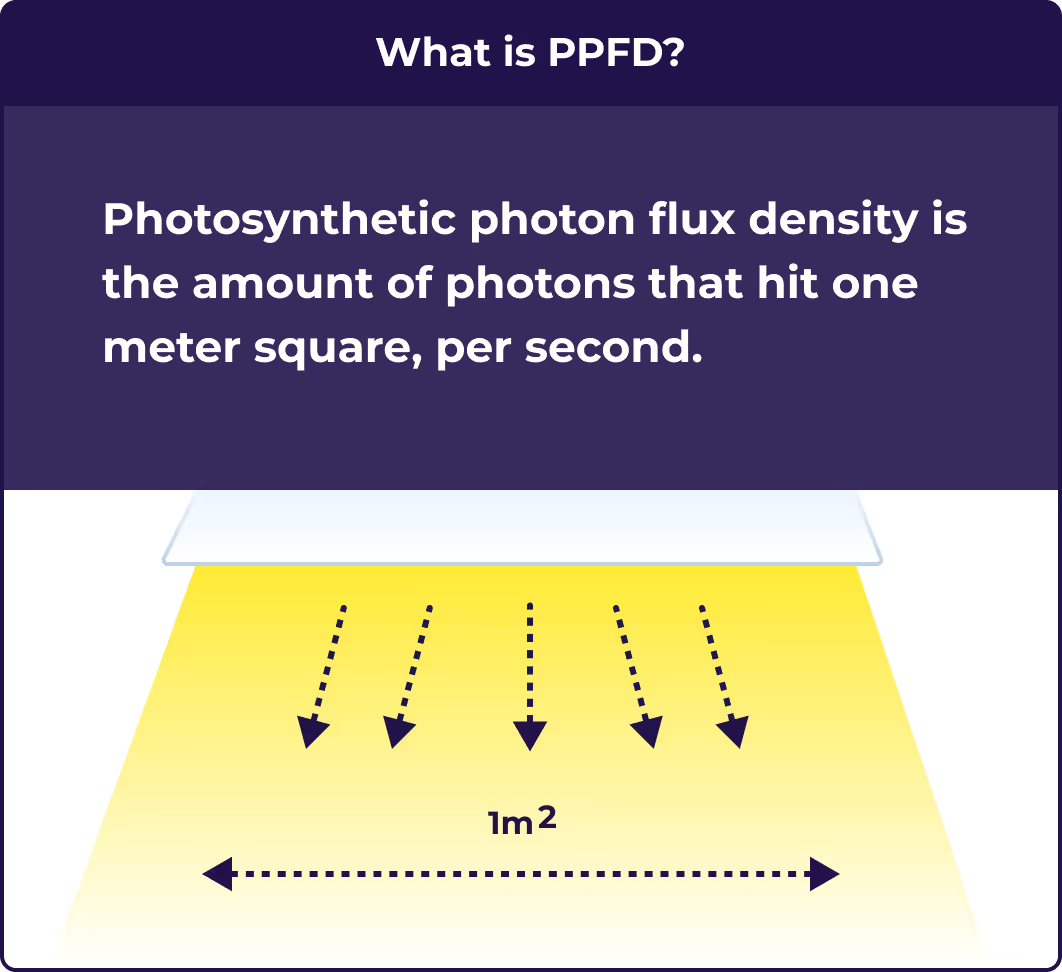
DLI = PPFD x time: The simple DLI calculation
The concept behind calculating DLI is quite straightforward.
DLI stands for Daily Light Integral, which is essentially the product of your light intensity (PPFD) and the duration your lights are on (or the light hours of natural daylight).
- PPFD (Photosynthetic Photon Flux Density): This measures the number of photons of photosynthetically active light hitting a surface per second, expressed in micromoles per meter squared per second (μmol/m2/s). It's the instantaneous "brightness" your plants experience.
- Time: The total number of seconds your plants are exposed to light within a 24-hour cycle.
To calculate DLI, multiply your average PPFD by the number of seconds in your plant's photoperiod and convert the units.
For example, if your average PPFD is 500 μmol/m2/s for 18 hours, your DLI calculation looks like this:
500 μmol/m2/s×(18 hours×3600 seconds/hour)=32,400,000 μmol/m2/day
To get this into moles of light per square meter per day (mol/m2/day), which is the standard DLI value, you divide by 1,000,000 (since 1 mole = 1,000,000 micromoles):
32,400,000 μmol/m2/day÷1,000,000=32.4 mol/m2/day
This simple equation shows why time is just as important as the light intensity PPFD.
High light intensity for short periods can result in the same DLI as lower light per square meter over a longer duration.
DLI targets for cannabis growth stages
For cannabis growers, knowing the optimal DLI values for each growth stage is key to maximising photosynthesis and ultimately, yield.
Here are the ideal DLI target ranges for cannabis:
Nuance is important
These are general guidelines.
Factors like specific strain type, supplemental CO₂ levels (which allow plants to utilise higher DLI), and your overall grow environment (temperature, humidity) can influence the optimal DLI.
It's about finding the sweet spot for your specific location and setup.
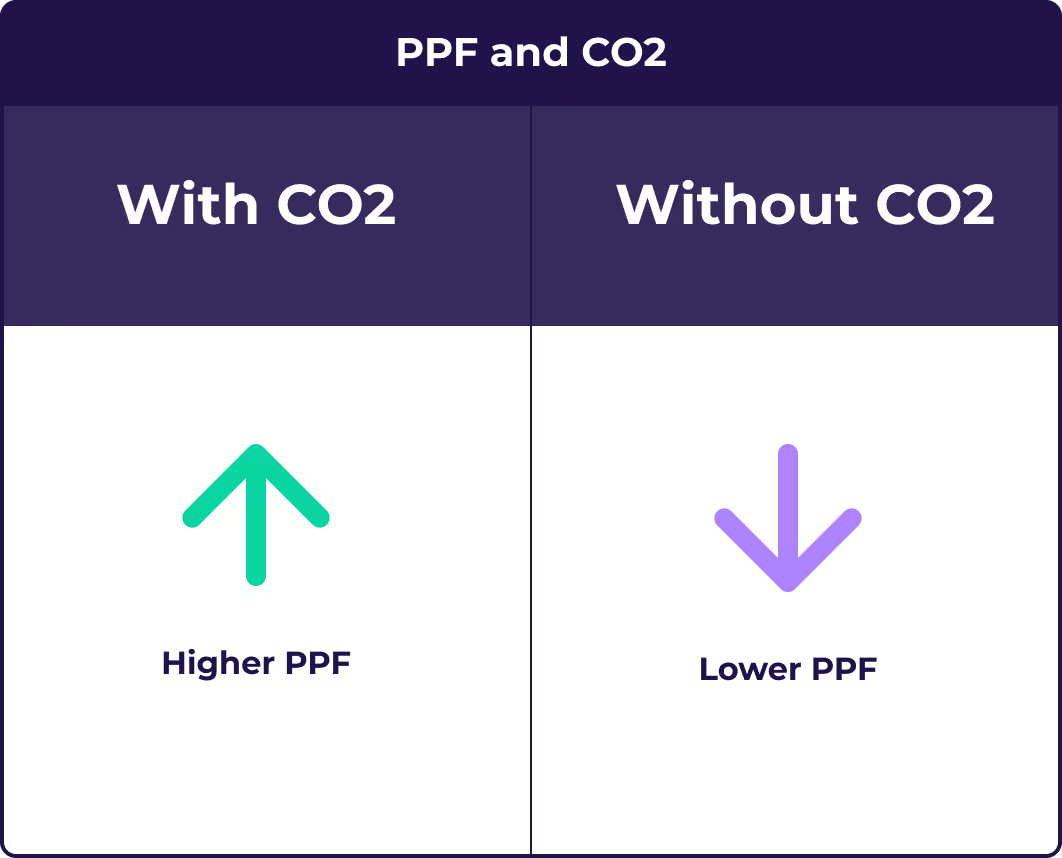
Why a DLI Calculator isn’t enough
You'll find many online DLI calculators or DLI calculator apps out there.
While helpful for a quick estimate, they usually fall short for serious growers.
Here's why a basic DLI calculator isn't the complete solution:
- Manual PPFD input: Most require you to take PPFD measurements manually with a PAR meter and then input an average PPFD value. This is a snapshot, not a dynamic measure.
- Static & not cumulative: They only show you a theoretical DLI based on fixed inputs. They don't account for daily fluctuations, light fall-off at canopy edges, or dimming cycles.
- Doesn't account for changes: If your light schedule changes, or you dim your grow lights, a simple calculator won't reflect the actual amount of light your plants are receiving.
This is where live DLI monitoring changes the game.
Measure live DLI with Grow Sensor
The Grow Sensor is the best light meter for plants.
It’s designed to eliminate guesswork when calculating DLI and give you the real-time data you need.
Our Grow Sensor doesn't just estimate DLI; it measures it.
The Grow Sensor continuously:
- Measures PPFD (Photosynthetic Photon Flux Density) live at your canopy level.
- Converts this live PPFD into cumulative DLI over a 24-hour period.
- Shows you historical DLI data directly in our intuitive app.
The key benefit?
You can see your actual Daily Light Integral build throughout the day, not just a theoretical estimate.
This empowers you to truly optimise light schedules, dial in your dimmers, and directly improve your yields.
You'll finally have concrete values to base your lighting decisions on.
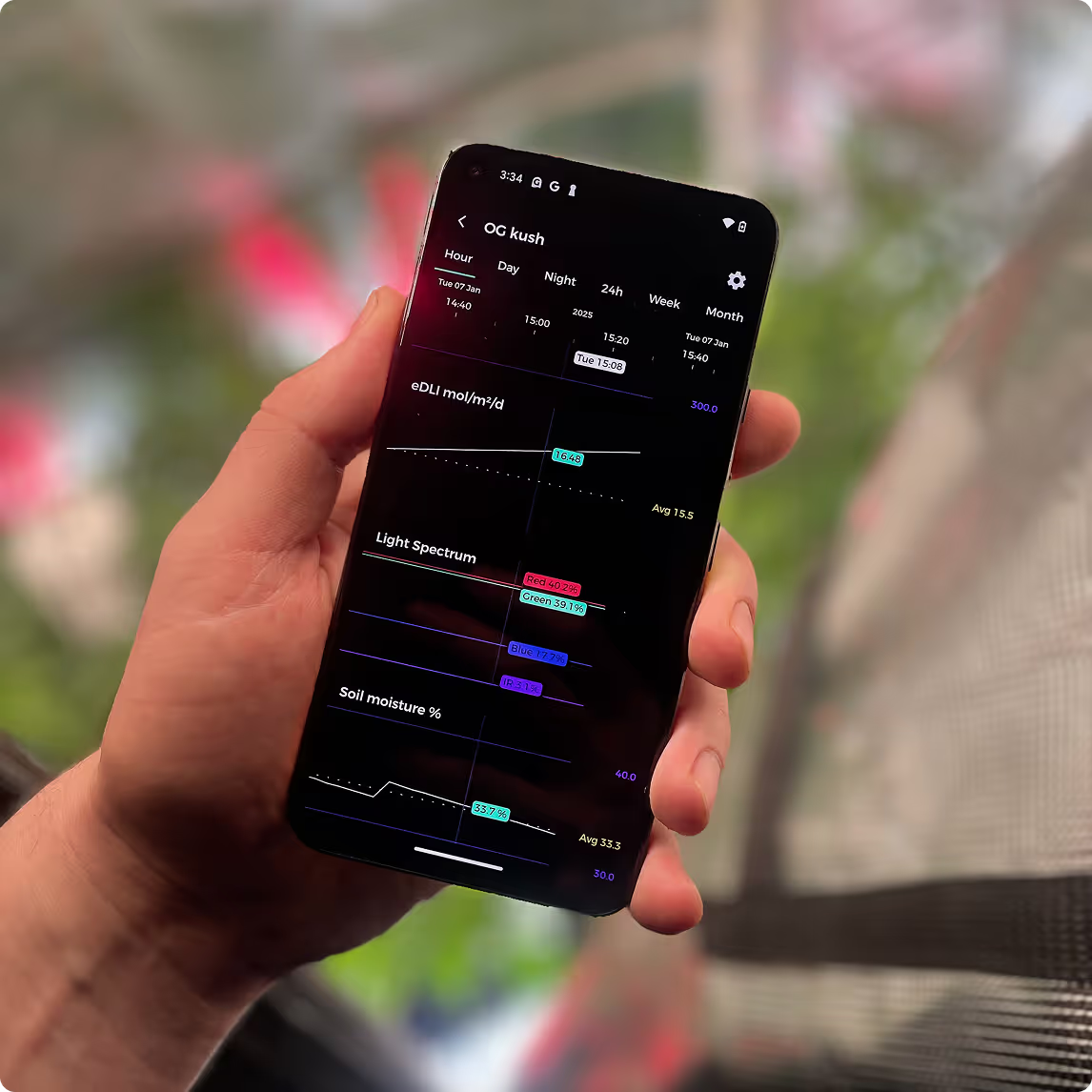

Practical DLI use cases for growers
Understanding and monitoring your Daily Light Integral unlocks several powerful optimisations for your grow:
- Diagnosing slow veg growth: If your plants are growing slowly in the vegetative stage, live DLI data can quickly confirm if low cumulative DLI is the culprit. You might find you're consistently under the recommended 15–25 mol/m²/day range.
- Checking canopy uniformity: Use the Grow Sensor to move around your canopy and check if the light intensity PPFD and resulting DLI are sufficient in the far corners or under specific areas. You might discover significant light fall-off you weren't aware of, requiring light redistribution.
- Adjusting CO₂ supplementation: Plants can use higher DLI values when CO₂ levels are elevated. With live DLI data, you can precisely sync your CO₂ supplementation to your actual light intake, ensuring you're not wasting resources or underusing your light.
- Saving energy: Avoid over-lighting by ensuring you're not exceeding optimal DLI targets, which can save on electricity costs without sacrificing yield.
Takeaways
The Daily Light Integral (DLI) is a powerful and essential metric for optimising plant growth and maximising yield.
While a basic DLI calculator can offer an estimate, real optimisation comes from continuous, real-time monitoring.
The Grow Sensor makes mastering DLI effortless, giving you the insights you need to precisely adjust your grow lights.
Stop guessing and start growing smarter.
Ready to take your grow to the next level?
Want to dive deeper? Check out these related guides:
- What’s the best PPFD for seedlings? The cannabis edition
- The optimal PPFD for veg: Your ultimate guide
- Dial in PPFD for flower to get the best results.
Happy growing!
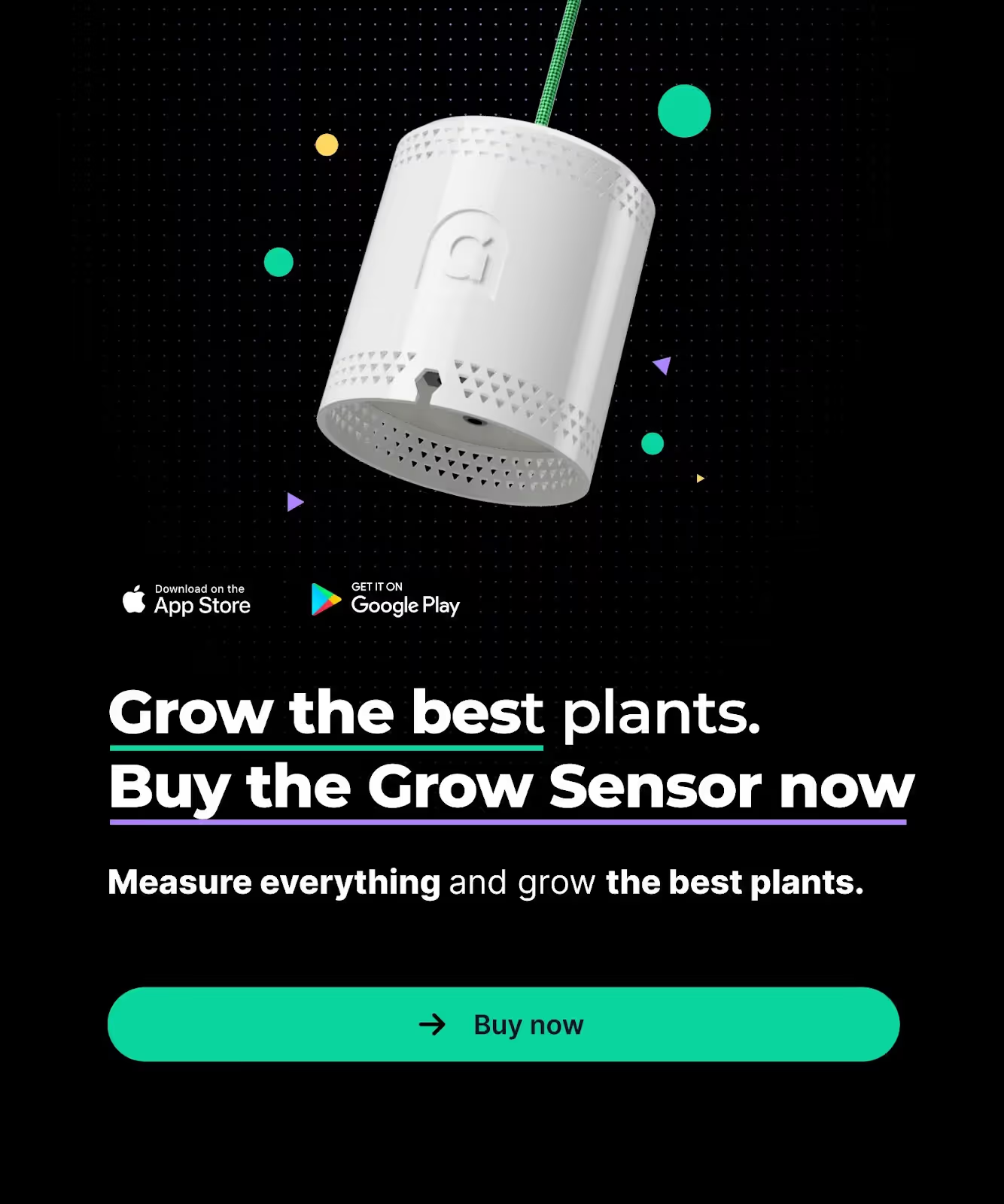
FAQs
What should the DLI be for cannabis?
For cannabis, DLI targets vary by growth stage:
- Seedlings/clones: 6-12 mol/m²/day
- Vegetative stage: 15-25 mol/m²/day
- Flowering stage: 25-45+ mol/m²/day (often peaking during bulking)
How do you calculate DLI?
You calculate Daily Light Integral (DLI) by multiplying your Photosynthetic Photon Flux Density (PPFD) (in μmol/m2/s) by the total number of seconds your lights are on in a day, then dividing by 1,000,000 to convert micromoles to moles.
Formula: DLI (mol/m²/day) = PPFD (μmol/m2/s) x Light Hours x 3600 seconds/hour ÷ 1,000,000
What happens if DLI is too high?
If the Daily Light Integral (DLI) is too high, plants can experience light stress or light burn, which is direct damage to plant tissue caused by excessive light intensity.
Symptoms include:
- Bleaching: Leaves and buds turn pale yellow or white.
- Tacoing: Leaf edges curl upwards, trying to reduce surface area exposure.
- Downward curling/clawing: Leaves may curl downwards.
- Stunted growth: The plant's overall development slows down.
- Nutrient issues: Apparent nutrient deficiencies or burn, as the plant struggles to process light-driven metabolic activity.
What happens if DLI is too low?
If Daily Light Integral (DLI) is too low, plants will experience light deprivation, leading to:
- Slowed or stunted growth: Plants won't have enough energy for proper development.
- Stretching (etiolation): Stems become long and spindly as plants search for more light.
- Pale or yellowing leaves: Insufficient light reduces chlorophyll production.
- Poor flowering: Reduced yields and underdeveloped flowers or fruits.
- Weak plants: Increased susceptibility to pests and diseases.








.avif)
